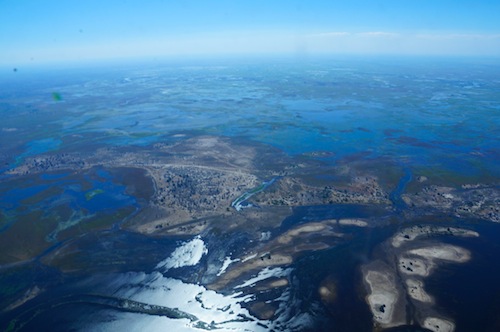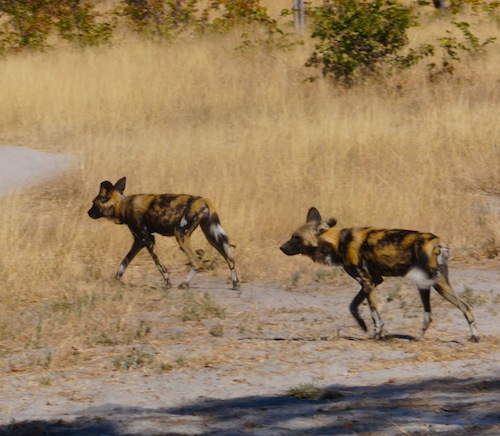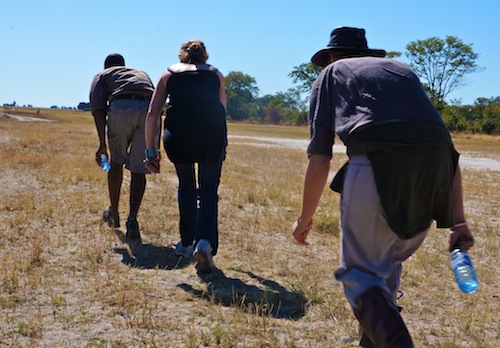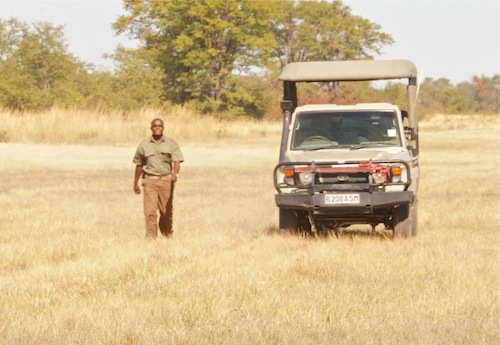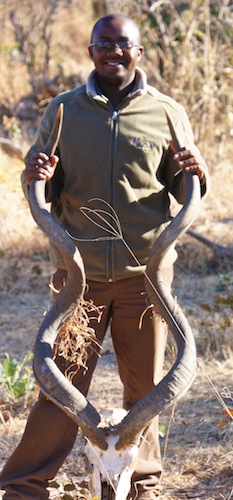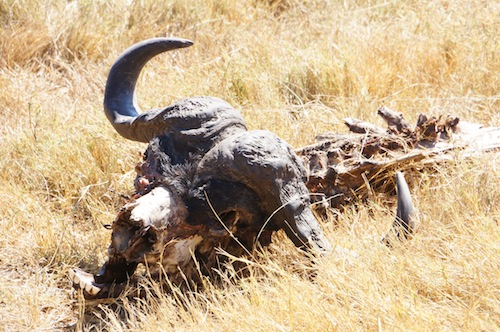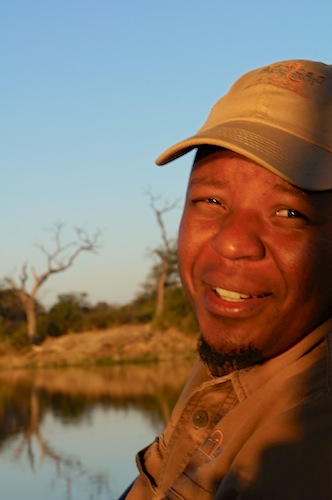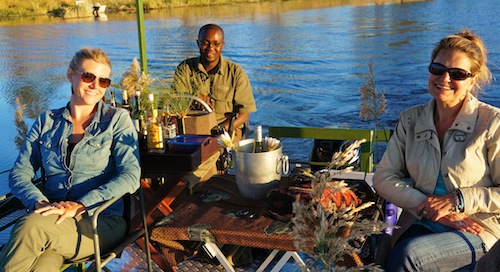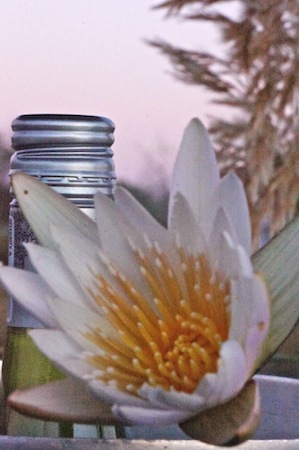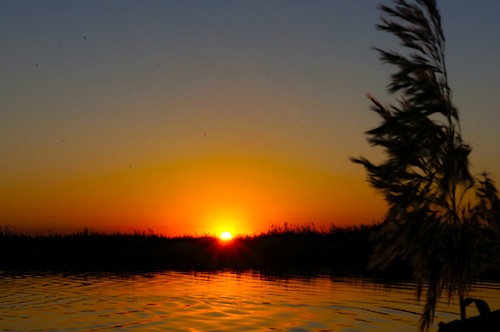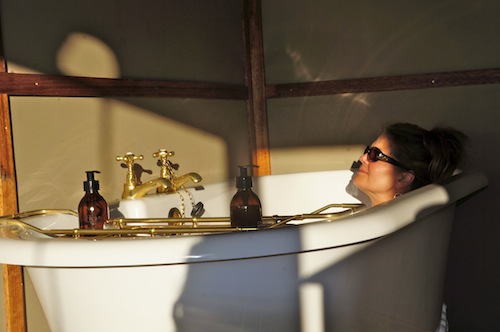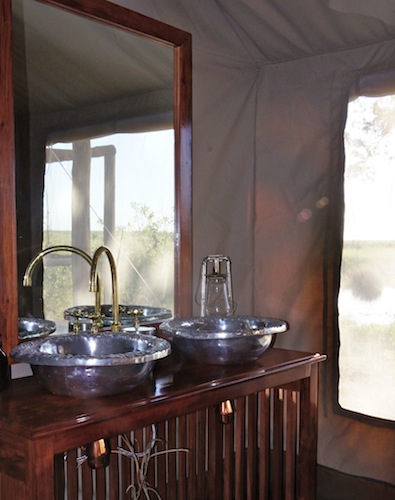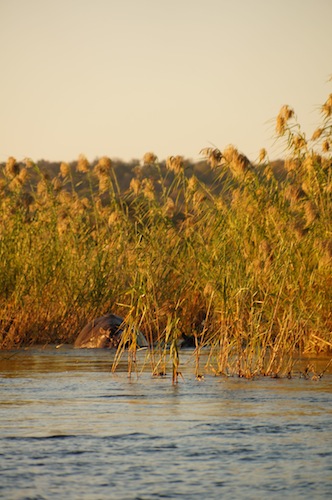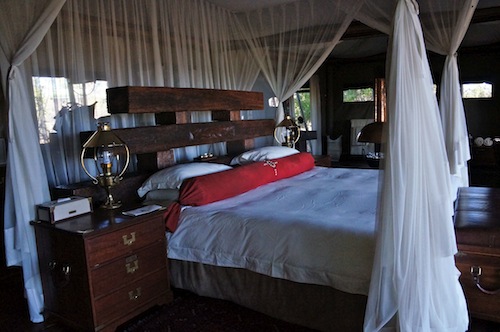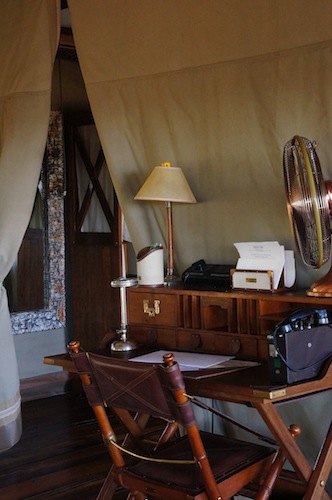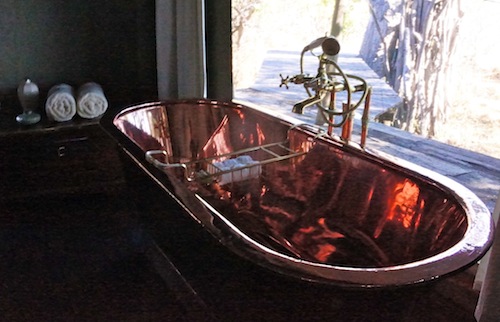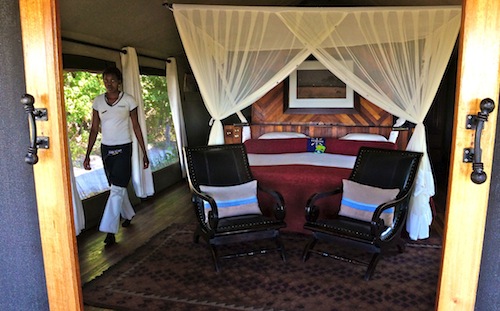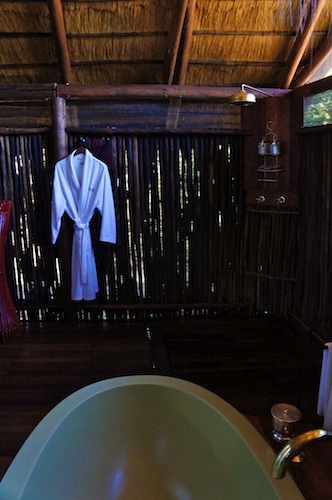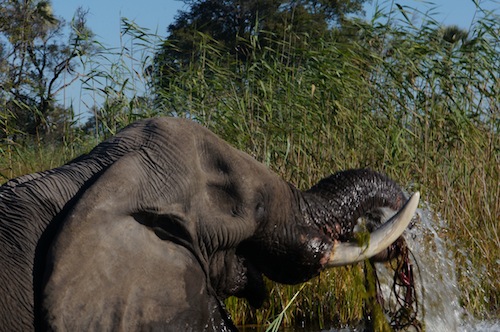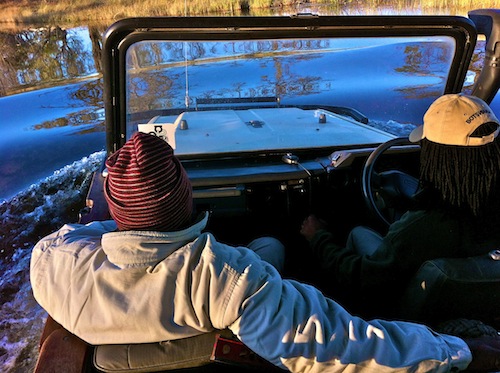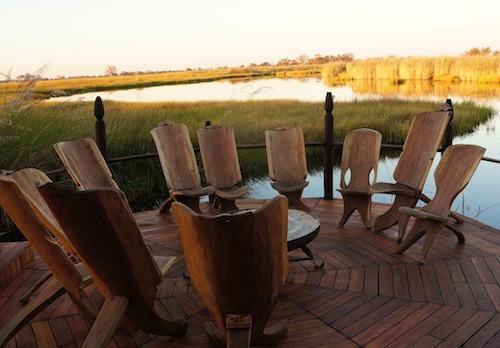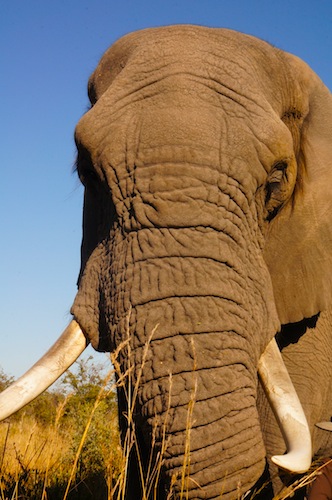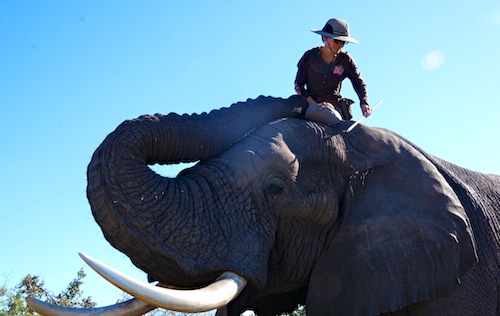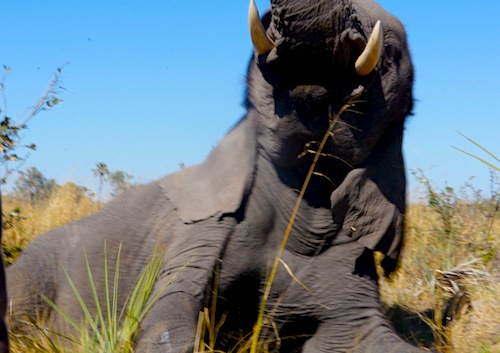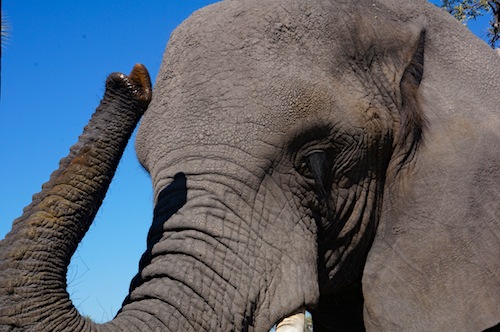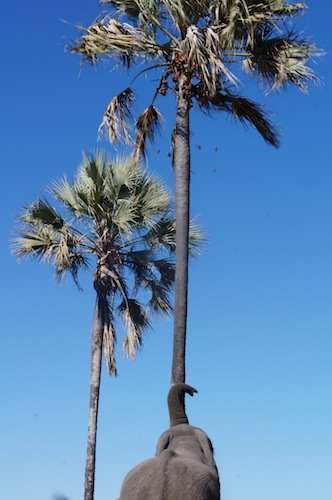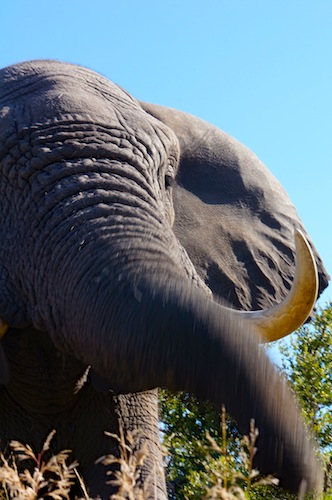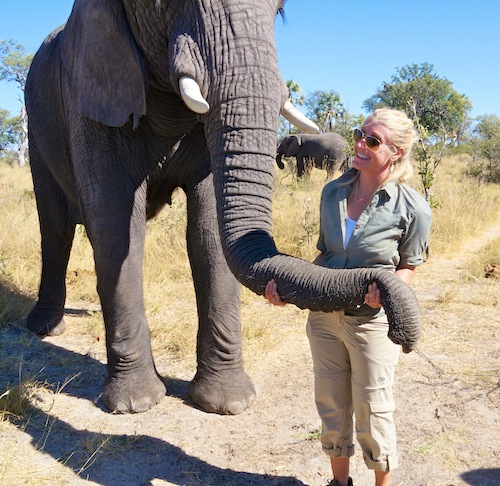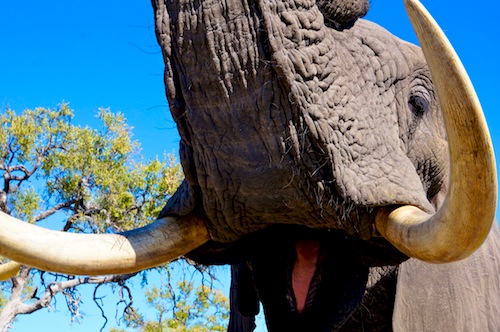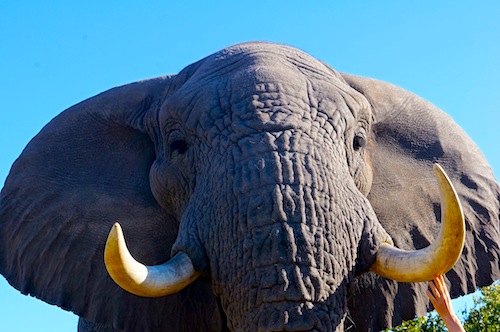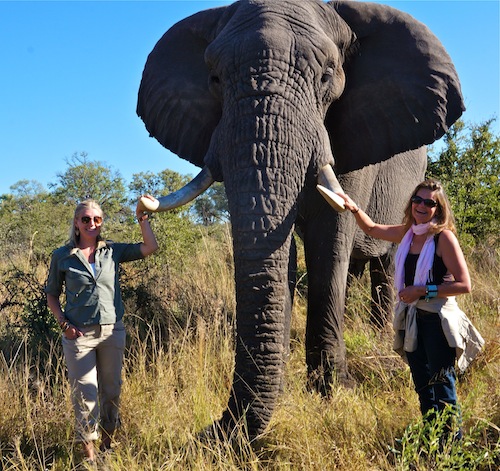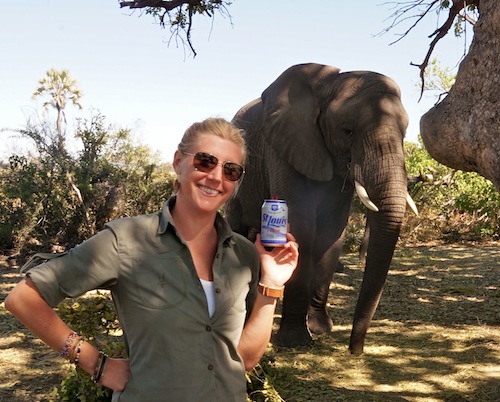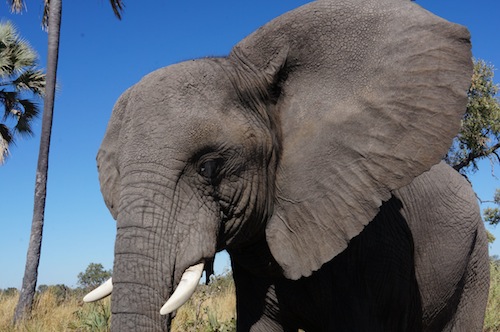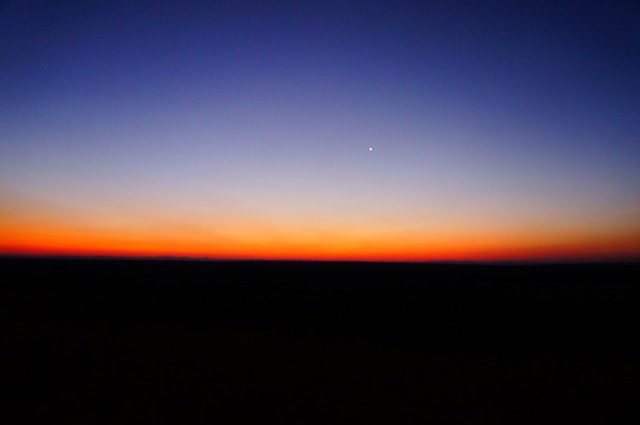Botswana: Overflowing Deltas and Elephants Up-Close
Ariel view of Botswana.
Check out the photo montage:
A rare siting– wild dogs! Just walking, in Chobe National Park near Linyanti Ebony Bush Camp.
And just when I thought walking in close proximity to wild dogs was weird, I turned to see “Becks”, the owner of African Bushcamps, Muriel of Askari Travel and another guest hunched over and walking towards the dogs. When I questioned, what was happening, I was shushed and then informed that they were “stealthily” approaching the dogs. Right…
So of course I turn back to our driver to roll my eyes at the other three “sneaking up” on the wild dogs. Which clearly seems like a bad idea. The only problem is, he is outside of the car walking alongside the Land Rover rolling along down the runway by itself. Have you ever had that feeling that you were the only normal one? And coming from me, that’s saying something.
Our driver with a pair of kudu horns at Linyanti Ebony up close.
Just a reminder that something is always trying to eat you.
Becks, owner of African Bushcamps on a sunset cruise. Fun fact, where he built Linyanti Bushcamp and Linyanti Ebony used to be dry and arid park, in the past couple of years, rivers have refilled for the first time in over 30 years. He has invested in a few boats for guests to enjoy the new terrain.
Muriel, Askari Travel and I enjoying our sundowners on the newly formed river in Chobe National Park.
A beautiful sundowner display on the sunset cruise.
Sunset over the newly formed river delta in Chobe National Park.
Muriel Truter, Askari Travel, demoing Linyanti Ebony’s outdoor bathtub.
Luxurious double sinks at both Linyanti Ebony and Linyanti Bushcamp.
Linyati Ebony, Linyanti Bushcamp and Salie, African Bushcamps, Linyati Reserve: I was delighted to discover the private reserve borders the Chobe National Park. The tents at Ebony and Bushcamp are large with a sitting area, double bed covered with mosquito nets and outdoor decks. The bathrooms are in tent, with double sink basins and beautiful brass shower fixtures. Both camps have intimate communal sitting and dining areas, inclusive of a fire pit where breakfast and sundowners are served. The main difference between the two camps is that Ebony’s tents are on a raised platform and Bushcamp’s tents are on the ground. The food and wine selection are fantastic. There are four tents in each camp with electricity. Saile is the slightly cheaper option, with smaller tents, no electricity, no mosquito nets around the beds, in-tent toilet and outdoor bucket shower. The communal area is a larger tent with a dining table, small sitting area and fire pit. Activities like boat trips on the newly formed delta (the river hasn’t run through this area in over 30 years), fishing, walks and game drives are included.
And yes, that’s a hippo we passed en route to Zarafa Camp on the Selinda Spillway.
Zarafa Camp and Selinda Camp, Selinda Reserve (a private concession of 230,000 acres) on the Selinda Spillway: 1. Zarafa has four of the most luxurious tents I’ve ever set foot in. The tents are all on raised platforms with large decks, individual plunge pools and a brass outdoor shower overlooking the Selinda Spillway. Inside these mammoth canvas havens is a large living room with private mini-bar and charging station. The beds are covered with mosquito nets and a huge bathroom with a brass tub, a fireplace and indoor shower. The tents also come equipped with Swaroski binoculars, Canon cameras and gym box for your use at camp. Stand out activities include: photographic safaris with a guide who while help you get the perfect shot and a wine tasting safari. Curio shop with high end designers like Anna Trzbenski and African Princess. There is even a small outdoor gym (punching bag, stationary bike and rowing machine). Great food and wine selection. 2. Selinda has nine raised tents. Beds covered in mosquito nets. Large slightly exposed bathrooms with tub and shower. Selinda has a large communal sitting and dining area, a small shared plunge pool, an entertainment room for children with movies, a curio shop and wine cellar. Activities include: Mokoro rides (traditional dugout canoe which is poled through the channels of the Spillway), canoe, boat rides, sunset cruise, game drives, walks and photographic safaris. No wifi.
One heck of a bed for a tent, Zarafa.
Come on, it’s so “Out of Africa”, Zarafa.
I’d never experienced a copper tub. In addition to being functional, they feel so safari chic, Zarafa.
Tent at Selinda.
Partially exposed bathrooms at Selinda.
And look who we passed en route on our boat to Baines’ Camp.
Believe it or not, this is our safari vehicle bringing us to the Elephant Interaction on a road– which is clearly flooded. Water was literally coming over the sides of the Land Rover. The mechanic told us because of the flooding, he changes the oil every four days.
Stanley’s and Baines’ Camp, both part of Sanctuary, Moremi Reserve on the Okavango Delta: Stanley’s has nine tents overlooking the delta, a large communal dining and sitting area and a communal pool (if I were to star rate a tent, I’d say around 3.5-4 star for the tent itself, the common area comes close to a 5). Baines is a stitled camp right on the Delta. The small common area (sitting and dining are separate) is linked by wooden walkways to the raised rooms. The rooms themselves are cement with thatched ceilings, mosquito nets over the beds and a lovely deck off the front. While Baines is more luxurious, I felt a bit claustrophobic on the walkways and preferred being able to walk between tents at Stanley’s. Both camps have wifi in the main area and Africology products—which are fantastic. Game drives are possible, though it was quite flooded when I was there, making our safari vehicle amphibious, a bit of off-roading if you will. Boat cruises, fishing and Makuru (think of the African version of gondolas in Venice) are a available. The most stand out activity is the elephant experience.—it’ a MUST. An American man and his wife, took on three orphaned elephants who would have died on their own in the wild. They live with the elephants full time and allow guests to spend a few hours up close with some of the first trained African elephants. Afterwards you eat lunch with Doug, Sandi and their three elephants just behind. Truly a unique animal encounter, even in the bush in Africa.
Fire pit at Baines’ Camp.
Elephant Interaction can be arranged by Baines’ or Stanley’s Camp in the Moremi Game Reserve on the Okavango Delta. Doug and Sandi Groves adopted three orphaned elephants: Jabu, Thembi and Morula who are now “semi-habituated”. Jabu, featured above.
Sandi Groves with her son, Jabu. And yes, they live with the elephants year round in the bush.
Thembi was showing us tricks, like lying down.
Thembi also gave us a little wave.
Apparently the male (Jabu) got a bit jealous that we were paying attention to his “sister” (Thembi) showing off her tricks and began to shake fruit out of a nearby tree.
Morula wanted me to hold her trunk.
Which was shockingly heavier than anticipated. And the trunk whiskers were really scratchy.
I don’t care if they are vegetarians. It is terrifying when an elephant shows you her teeth.
According to Wikipedia: Elephants have four molars; each weighs about 11 lbs and measures about 12 inches long. As the front pair wears down and drops out in pieces, the back pair shifts forward, and two new molars emerge in the back of the mouth. Elephants replace their teeth six times. At about 40 to 60 years of age, the elephant no longer has teeth and will likely die of starvation, a common cause of death.
African elephants are larger than Asian elephants, with males averaging between 10-13 feet tall. A little intimidating when you are standing below one of these guys.
Just to give you an idea of scale of human to African elephant. Me (left), Jabu (center) and Muriel Truter, Askari Travel (right).
Being from St. Louis, Missouri, I was excited to learn that Botswana’s national beer was “St. Louis” and no the elephant is not photoshopped in. Morula is actually less than 10 feet behind me and eying me for a sip.
Sadly, elephants greatest threat are humans (poaching). Click here to learn how to help.
A good 4-star option (as far as tents go) is: Xakanaxa Camp on the Okavango Delta in Chobe National Park. Xakanaxa Camp is situated in the middle of the park and right on the Delta. The tents have raised platforms, fully enclosed, large deck, no mosquito net and partially open bathrooms. Electricity goes out at 8pm, but paraffin lamps are lit all over. There is a large communal area with serve-yourself complimentary beverages, including liquor. One of the most picturesque fire pits overlooking the water. Communal style table (unless specially requested) and buffet style service. The food was pretty good, especially the gem squash with corn (a local specialty). Because you are within a national park, walks are not offered, just drives and boat cruises. Fastest laundry service to date. Large curio shop and two common pools. A family villa is in the midst of construction (bedrooms will be screened, but main areas are open). No wifi.
The first star, just after sunset over the delta.
